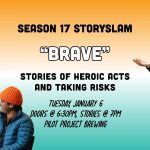Classical
Dale Gutzman Returns to the Skylight
Gutzman, banished from the Skylight in the 1980s, returns in the summer where anything can happen.
Aug 20th, 2009 by Tom StriniDiscovery World hosts memorial to Les Paul tomorrow
One of the Milwaukee area's most celebrated natives will be honored tomorrow when Discovery World hosts a memorial to Les Paul. Paul will "lie in repose" in a closed casket and the public is invited to pay their respects.
Aug 20th, 2009 by Ted Bobrow8/18 – 8/24
Great outdoor concerts and exclusive engagements this week: the Glenn Miller Orchestra, bluegrass at Chill on the Hill, Concord Chamber Orchestra at Boerner Botanical Gardens, Lou Fanucchi and more.
Aug 17th, 2009 by Brian JacobsonHighlights from 8/12 to 8/18
Storms turn Gaelic in Tosa before Irish Fest this weekend. Alchemist gets Broadminded, DanceCircus hits the Boys and Girls circuit, and a little Steampunk hits the Cabot.
Aug 10th, 2009 by Brian JacobsonDillner Out at the Skylight
Managing director Eric Dillner, the center of controversy since artistic director Bill Theisen was fired, has resigned.
Aug 5th, 2009 by Tom StriniHighlights from 8/7 to 8/13 (Updated)
It's muggy, and the performing arts world gets a little crazy--crazier than usual--as a month-long Phantom of the Opera rolls in, the surreal Missoula Oblongata arrives, and a full-on puppet parade. Includes footnotes of Milwaukee auditions, news, and more.
Aug 3rd, 2009 by Brian JacobsonRENT at Greendale Community Theatre
A local staging of RENT rises to the challenge
Jul 27th, 2009 by Ryan FindleyJuly 28 – August 3
What's the bigger opener this weekend: the world-influencing Emergence by Milwaukee Ballet, or Cats (not the broadway musical but actual performing felines) at Alchemist?
Jul 27th, 2009 by Brian JacobsonPump up the polka!
When The Squeezettes play, the beer that made Milwaukee famous will make a fool out of you, and you will do the hokey pokey, and you want to know why?
Jul 23rd, 2009 by Tea Krulos7/22 to 7/28
This week on Milwaukee stages: dancing, tuba-playing contests, street music, tango and scenes from Shakespeare's greatest hits.
Jul 20th, 2009 by Brian Jacobson7/15 – 7/21
Milwaukee stages are jumping with fearless productions, including offerings from Youngblood, Danceworks, and Uprooted Theatre. If you're ready for something fresh, edgy and fabulous, get out there.
Jul 14th, 2009 by Brian JacobsonJarreau, Opera, Ballet, and Bombastics
With Thursday night's concert featuring 7-time Grammy Winner Al Jarreau, interactive activities for the kids, plus a ballet and opera feature with an unbelievable fireworks finale Saturday night -- it's a party unlike most others in the greater Milwaukee area this July
Jul 9th, 2009 by Hope Stolarski



















